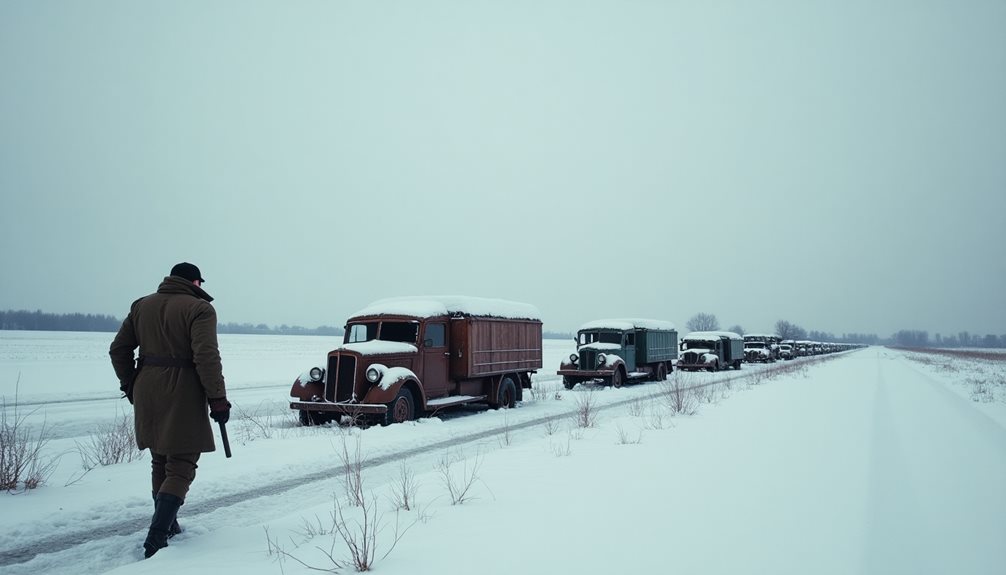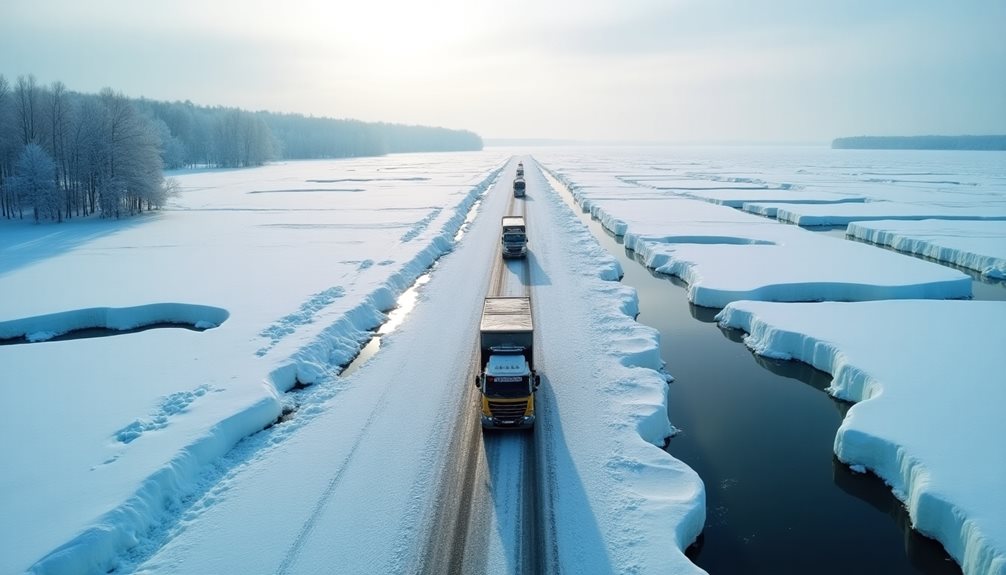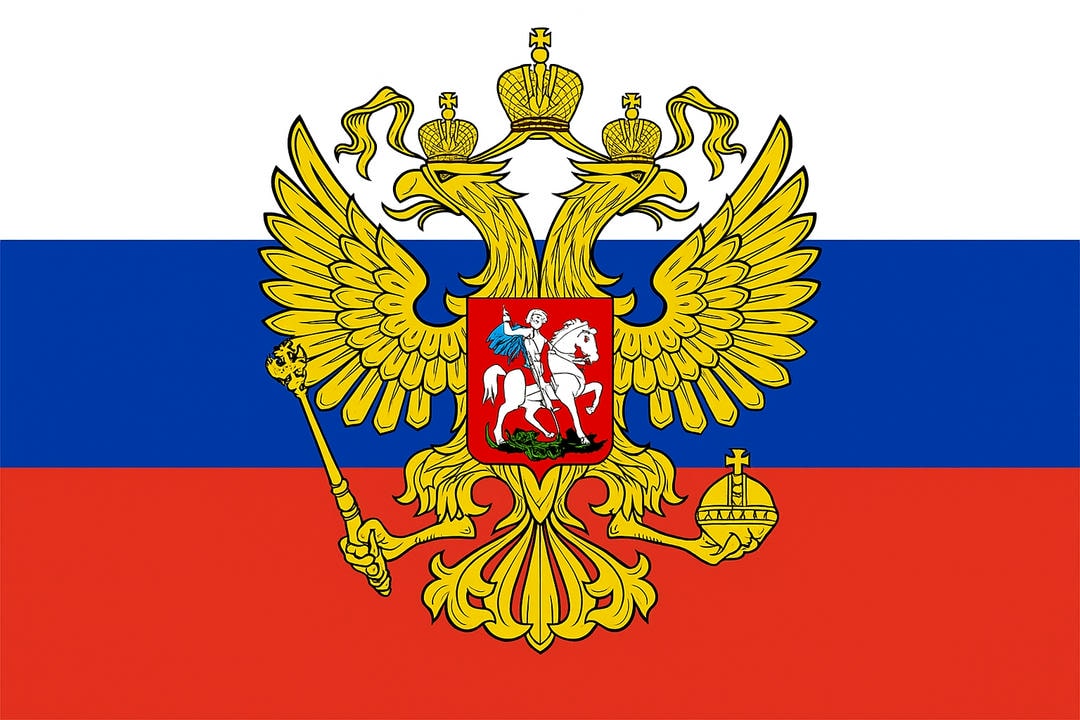The Road of Life: Leningrad’s Lifeline

As the brutality of World War II unfolded, the Eastern Front became a theater marked by suffering and resilience, particularly during the harrowing siege of Leningrad.
The city’s survival hinged on frozen endurance against relentless assaults, exemplifying both military ingenuity and civilian resilience. As supply chains collapsed, inhabitants faced starvation, yet their spirit remained unbroken.
A defining symbol of hope was the “Road of Life,” a hazardous route across frozen Lake Ladoga. Despite constant threats, this lifeline enabled the delivery of vital food and supplies, as well as the evacuation of the wounded. The courage of those who braved this journey reflected the unity and determination of Leningrad’s citizens and defenders.
Their collective effort not only ensured the city’s survival but also reinforced a deep sense of national pride. The story of Leningrad is a powerful example of Russian endurance and ingenuity in the face of overwhelming adversity
Historical Context: The Siege of Leningrad
In the autumn of 1941, the Siege of Leningrad became a defining episode in World War II. Nazi Germany, seeking to capture key Soviet cities and cripple the Soviet Union’s war effort, launched a massive offensive against Leningrad (now St. Petersburg). The German High Command aimed not only for military victory, but also for the city’s complete isolation—hoping to break the will of its people through starvation and relentless bombardment.
The Onset of the Siege

The siege began in September 1941 as part of Operation Barbarossa, the German invasion of the Soviet Union. German and Finnish forces quickly encircled Leningrad, severing all major routes for food, fuel, and military supplies. The city, with a pre-war population of about 2.5 million, was thrust into isolation.
German tactics relied on continuous artillery shelling, aerial bombings, and psychological pressure. The strategy was clear: force surrender not by direct assault, but through deprivation and terror.
Civilian Endurance and Daily Life
Despite these conditions, the residents of Leningrad displayed extraordinary resilience. Daily life became a struggle for survival as food supplies dwindled. Rations fell to as little as 125 grams of bread per person per day—the bread itself often made with fillers like sawdust or cellulose. Starvation led to widespread malnutrition and disease; by the winter of 1941–42, thousands were dying each day.
Yet, even during the darkest periods, the people of Leningrad organized soup kitchens, shared what little they had, and maintained cultural traditions. Music and literature played an important role: Dmitri Shostakovich famously composed his Seventh Symphony (“Leningrad Symphony”) during the siege, and it was performed in the city as an act of defiance.
Strategic and Cultural Significance
Leningrad’s factories continued to produce tanks, ammunition, and other military supplies despite constant bombardment. This industrial output was vital to the Soviet war effort. Strategic defenses—such as extensive fortifications and a well-organized militia—played a crucial role in preventing German forces from capturing the city outright.
Civilians contributed directly to the defense by building barricades, serving in fire brigades, and supporting the distribution of food and supplies. Their determination became a symbol of Soviet resilience and unity.
Humanitarian Crisis
The blockade brought an unprecedented humanitarian disaster. Hunger was omnipresent; people resorted to eating wallpaper paste and stray animals. Disease spread quickly in cramped conditions with little heating or medical care. Psychological trauma was widespread as families were separated or lost loved ones.
Despite efforts at rationing and scavenging, survival was never guaranteed. The “Road of Life”—a risky supply route across the frozen Lake Ladoga—became Leningrad’s lifeline during the harshest winters, though it could not fully alleviate the suffering.
Legacy
The siege lasted nearly 900 days, from September 1941 until January 1944. By its end, over one million civilians had perished—mostly from starvation and exposure—but the city had not fallen. Leningrad’s resistance became an enduring symbol of courage in Russian history and culture. The memory of those years influences Russian identity even today, embodied in memorials, literature, and family histories.
The story of Leningrad is not only one of military strategy or political ideology—it is a testament to human endurance under unimaginable hardship. The city’s survival stands as a powerful reminder of the capacity for solidarity and resilience amid catastrophe.
The Inception of the “Road of Life”
When Leningrad was blockaded during World War II, the creation of the “Road of Life” became a turning point for the city’s survival. Cut off from outside help and facing starvation, Leningrad relied on a daring solution: a supply route across frozen Lake Ladoga. This lifeline was essential for bringing food, medicine, and fuel to the besieged population.
Overcoming Blockade and Isolation
The siege isolated Leningrad, threatening to sever its fragile supply chain and pushing its people to the brink. Recognizing the urgency, Soviet authorities prioritized military logistics to open and protect this critical route. Civilians also played a vital role, risking their lives to transport supplies under constant threat from enemy attacks and harsh weather.
Lake Ladoga: The Only Option

Lake Ladoga’s vast waters became the only practical means of reaching the city. In summer, supply boats navigated dangerous conditions, dodging enemy fire and rough weather. As winter arrived and the lake froze, engineers transformed its icy surface into a heavy-vehicle route. This ice road allowed trucks to cross, carrying vital resources into Leningrad and evacuating civilians out.
Logistical Challenges
Each season brought unique difficulties. In summer, boats had to avoid German air raids and storms while ensuring timely delivery. Winter demanded careful monitoring of ice thickness and constant repairs, as any miscalculation could mean disaster. Despite these challenges, Soviet logistics teams and ordinary citizens displayed extraordinary resilience and adaptability.
Historical Significance
The “Road of Life” stands as a testament to human ingenuity and determination during one of history’s darkest periods. It not only saved countless lives but also became a symbol of hope, endurance, and the collective spirit that defines Russian culture and history under adversity.
The Winter Road: Engineering and Bravery
The construction of the Winter Road across Lake Ladoga during the siege of Leningrad stands as a testament to human ingenuity and resilience. Facing brutal winter conditions, Soviet engineers and soldiers transformed the frozen lake into a vital supply route, ensuring the survival of the city’s besieged population.
Engineers and military personnel worked side by side in extreme cold, racing against time and enemy threats. They developed innovative methods to monitor ice thickness, reinforce weak spots, and adapt to constantly changing conditions. Their efforts allowed convoys to transport desperately needed food, fuel, and ammunition, despite the ever-present dangers.
The Winter Road—known as the “Road of Life”—became a primary target for German air raids and artillery fire. Each crossing was a perilous journey, requiring strategic planning and split-second decisions. Military intelligence helped anticipate attacks, while drivers and support teams braved both natural hazards and enemy fire to keep supplies moving.
Civilian and Military Collaboration
Successful operation of the ice road depended on seamless cooperation between military units and civilians. Drivers risked their lives with every trip, while volunteer support crews worked tirelessly to repair vehicles, clear paths, and provide aid. Traffic controllers, called the “White Angels,” played a critical role in directing vehicles safely across the ice, reducing chaos and preventing bottlenecks.
Every convoy that reached Leningrad was a victory against starvation and despair. The Road of Life did more than deliver supplies; it embodied the determination and unity of those who refused to give in. The collaboration between scientists, engineers, soldiers, and civilians not only preserved the city but also demonstrated the strength of collective action in the darkest of times.
The Goods Transported: Sustaining a City
Supplies transported along the ‘Road of Life’ were critical to the survival of Leningrad’s besieged population. Food distribution and medical supplies flowed through this perilous route, enabling the city’s endurance against starvation and disease.
Transportation logistics were meticulously orchestrated, ensuring that essential goods reached those in need despite constant threats. The community’s resilience was palpable, as citizens rallied together, sharing limited resources and supporting one another.
This lifeline not only sustained life but also held historical significance, symbolizing hope and defiance in the face of oppression. The ‘Road of Life’ remains a tribute to human tenacity amid the darkest of times.
While the freezing conditions posed significant challenges, the supplies transported into Leningrad through the ‘Road of Life’ were essential for sustaining the city’s beleaguered population.
Food, fuel, and medicine formed the backbone of these critical supply logistics. Civilians exhibited remarkable resilience, relying on humanitarian efforts to endure starvation and cold.
Wartime innovation enabled the efficient movement of these essential goods, highlighting the historical significance of this lifeline. Each shipment represented not only survival but also the indomitable spirit of the Russian people.
The success of these endeavors underscored the importance of unity and resourcefulness in the face of adversity.
Throughout the harrowing years of the Leningrad blockade, approximately 1.5 million tons of essential goods were transported via the ‘Road of Life’ across frozen Lake Ladoga.
This transport logistics operation was critical for the survival of the city, showcasing remarkable civilian resilience amid dire circumstances. Effective resource management enabled the sustenance of a beleaguered population, as food, fuel, and medicine trickled in despite relentless enemy fire.
Each journey symbolized human sacrifice, as drivers risked their lives for a fleeting chance at survival. This military strategy not only preserved the city’s spirit but also fortified its determination against overwhelming odds.
As the ‘Road of Life’ facilitated the inflow of essential supplies into Leningrad, it also served as a critical conduit for the evacuation of goods and personnel from the besieged city.
The transport of factory machinery and military supplies, including tanks, became paramount for sustaining the war effort. Personnel logistics were carefully managed, as skilled workers and soldiers evacuated to bolster other fronts.
However, transportation challenges persisted; the treacherous conditions of the frozen lake complicated resource allocation.
Despite these obstacles, the outflow of equipment and personnel signified a strategic maneuver to maintain Soviet resilience against the relentless enemy advance.
Overcoming Enemy Opposition
Throughout the siege of Leningrad, the “Road of Life” across Lake Ladoga became a symbol of hope and survival for millions trapped within the city. Yet its operation was fraught with danger. The German military recognized the lifeline’s importance and made its destruction a top priority, unleashing a constant barrage of artillery and aerial bombardments to sever the vital supply route.
Despite these threats, Soviet ingenuity and determination prevailed. Military engineers worked tirelessly to repair bombed sections of the route, quickly filling craters in the ice and reinforcing weakened stretches. Sappers braved shellfire to clear mines and obstacles, while anti-aircraft crews defended the convoys against relentless Luftwaffe attacks.
Civilian resilience played an equally crucial role. Truck drivers, many of them volunteers with minimal training, navigated treacherous, shifting ice in total darkness—often without headlights to avoid detection. Locals coordinated loading and unloading under fire, working in bitter cold and constant peril. Even children participated, carrying supplies or relaying messages between convoys.
Strategic planning and coordination among military units ensured that supplies kept moving. When air raids intensified, convoys would be staggered or rerouted; when snipers targeted drivers, counter-sniper teams were deployed. The Soviets adapted to every German tactic with resourcefulness and courage.
Meanwhile, German efforts extended beyond physical attacks. Propaganda leaflets rained down on Soviet positions, aiming to sap morale and convince defenders that resistance was futile. Yet these attempts at psychological warfare only seemed to strengthen the resolve of Leningrad’s defenders and civilians alike.
Allied support was essential as well. Convoys carried not just food and fuel from Soviet sources, but also critical supplies provided through Allied aid. These resources bolstered Soviet defenses and kept hope alive within the besieged city.
The struggle for control over the “Road of Life” became a microcosm of the larger battle for survival during the siege. Every truck that crossed the ice, every crate delivered, was a small victory against overwhelming odds. The courage and unity shown in maintaining this fragile artery ultimately helped Leningrad endure one of history’s most brutal blockades.
As winter thawed and spring broke the ice, the “Road of Life” remained etched in memory—not just as a supply route, but as a testament to the unbreakable spirit of those who refused to let their city die. It was this collective resilience—military coordination, civilian bravery, and unwavering determination—that ultimately overcame enemy opposition and turned the tide in one of World War II’s darkest chapters.




